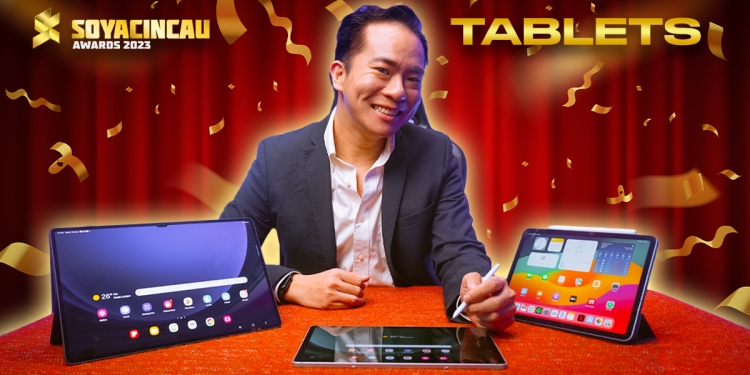While tablets aren’t as sexy or as influential as smartphones, they still make up a significant portion of the global technology sector. As a device purely for consuming content—and playing the odd game or two—they are unmatched, and they’re useful to have whether you’re trying to entertain your kids (and keep them quiet in the process) or just catching up on some Netflix shows while lying in bed.
And that’s before you consider the ones that push the boundaries of what a tablet should be. Those that try to accommodate your daily computing needs, either by fitting a laptop-class processor into their lithe frame or simply bundling every single feature you could ever want. These ones are not cheap, and they have their own issues, but for the right kind of user, they can genuinely replace a laptop or desktop (we can already hear the “what is a computer” arguments starting, but whatever).
In recognition of this, for this year’s SoyaCincau Awards, we are spinning off tablets into their own separate category with four separate awards. Whether you’re looking to buy an iPad or an Android tablet, there’s something for everyone for every budget, so let’s get it started. In case you were wondering, the panel members consist of Alexander Wong, Najib Hamid, Raymond Saw, Jonathan Lee, Hanif Azrai, Putra Aziz, Sharil Abdul Rahman, Chief Chapree, and Sudarshan Duke, with our social media manager Amalin Aisyah also contributing.
Read the rest of our Awards
- SoyaCincau Awards 2023: The best smartphones of the year
- SoyaCincau Awards 2023: The best laptops and gadgets of the year
- SoyaCincau Awards 2023: The best electric vehicles this year
- SoyaCincau Awards 2023: The best telcos this year
iPad of the Year
GOLD: iPad Air (M1)
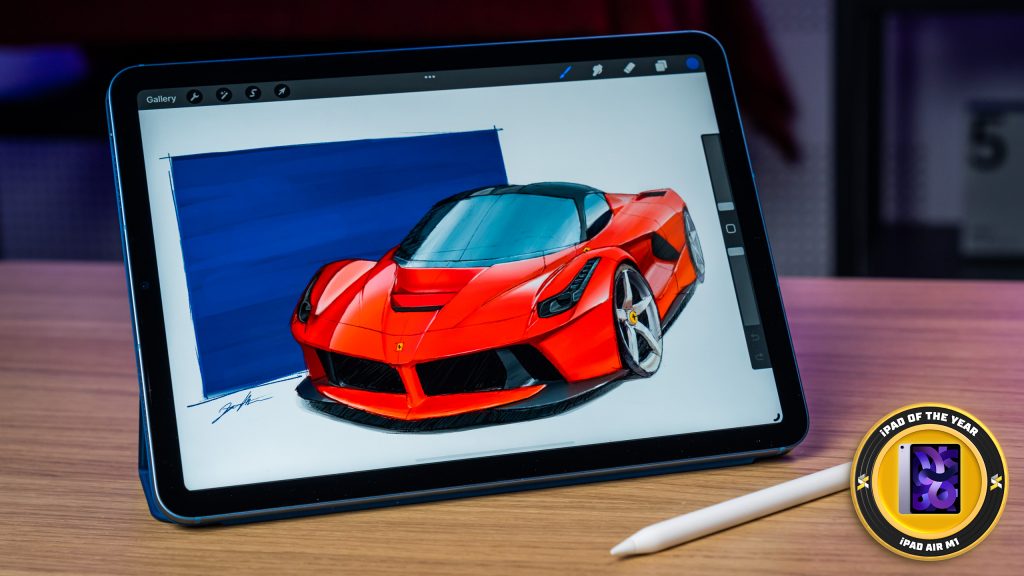
Last year’s Tablet of the Year continues to be the best product in Apple’s iPad lineup. If we were to draw up a Venn diagram of price, performance and features, the iPad Air would sit smack in the middle. Yes, with prices starting at RM2,899, the Air is not cheap, especially when the base storage is still a piffling 64GB.
But this is really the only iPad that justifies the outlay. Pay any less and you lose out on either capabilities (10th-gen iPad) or screen size (iPad Mini), and anything more than that (iPad Pro) is just overkill—especially when this year-old M1 can still do 99% of what the Pro can do. The Goldilocks of the range. – Jonathan Lee
Learn more about the iPad Air here.
Read our full review of the iPad Air here.
SILVER: iPad Pro (M2)
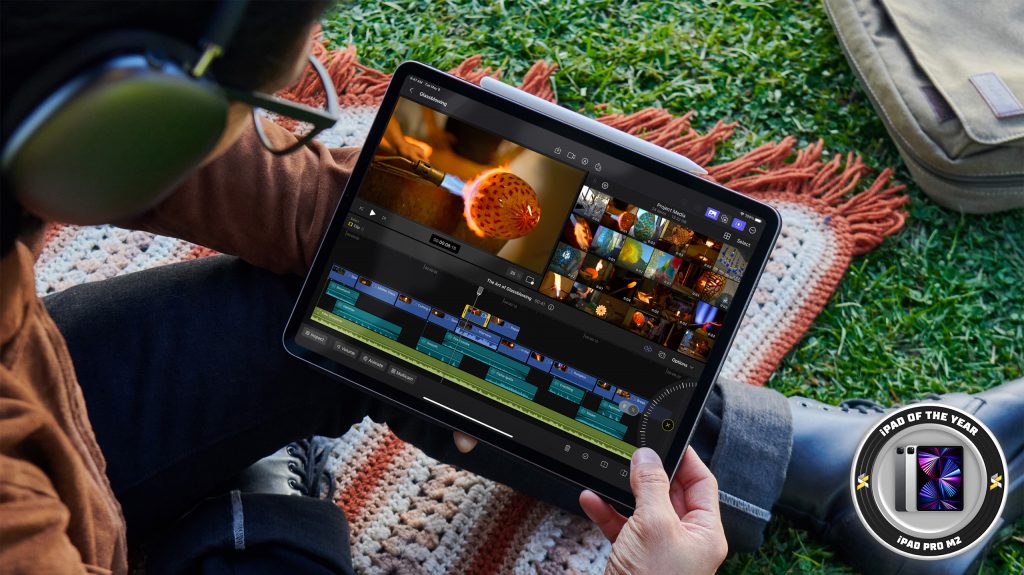
The best thing about the iPad Pro is that unless you can survive with just 64GB of storage, the base 128GB model is only RM250 more expensive than the equivalent Air. You gain several features—Face ID, dual cameras, a lidar sensor and a Thunderbolt port—that, while questionable in their utility on a tablet, are nice to have for not a lot more money. For 2023, Apple added an M2 chip to provide some breathing space over the Air, but unless you’re deep into video editing in Final Cut Pro or DaVinci Resolve, you’ll hardly notice.
The biggest problem for the most expensive Pro models is the 14-inch MacBook Pro, now cheaper with the addition of the regular M3 chip. It offers more ports—including HDMI, an SD card slot and, yes, a headphone jack—as well as a built-in keyboard, full-fledged macOS and a larger display with same mini LED technology as the 12.9-inch iPad Pro. All that for just RM600 more (once the cost of upgrading the tablet to 512GB of storage is factored in), and you’ll definitely get more work done with it. – JL
Learn more about the iPad Pro here.
BRONZE: iPad (10th generation)
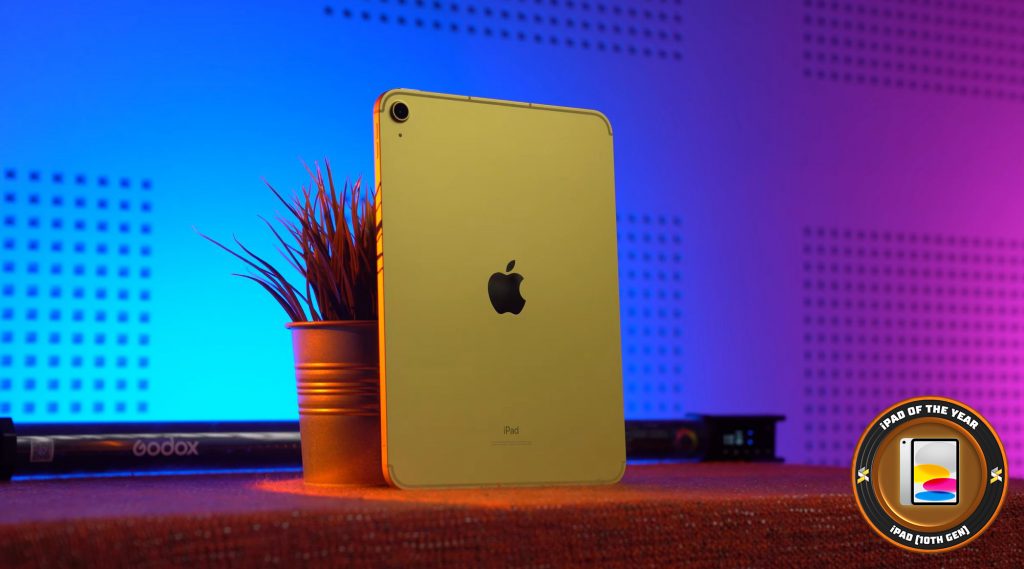
For some, the tenth-generation iPad is the most nakedly daring representation of Apple’s strategy of walking you up the price ladder. It entices you with features such as a USB-C port and the same full-screen 10.9-inch display as the iPad Air. Not to mention, this is actually the best iPad for video calls, as Apple has finally moved the selfie camera to a more logical position on the long side.
But then you get sucker punched by the glaring lack of second-gen Apple Pencil support, notoriously forcing you to use the first-gen Pencil with the most ridiculous Lightning-to-USB-C dongle known to man. Apple has since redressed the balance with a cheaper USB-C Pencil, but without pressure sensitivity, it’s not a viable option for the artists who would buy it in the first place. All that aside, however, this iPad is still a fantastic tablet for content consumption, backed by the longest software support in this price range. – JL
Learn more about the iPad (10th generation) here.
Android Tablet of the Year
GOLD: Samsung Galaxy S9 Tab Ultra
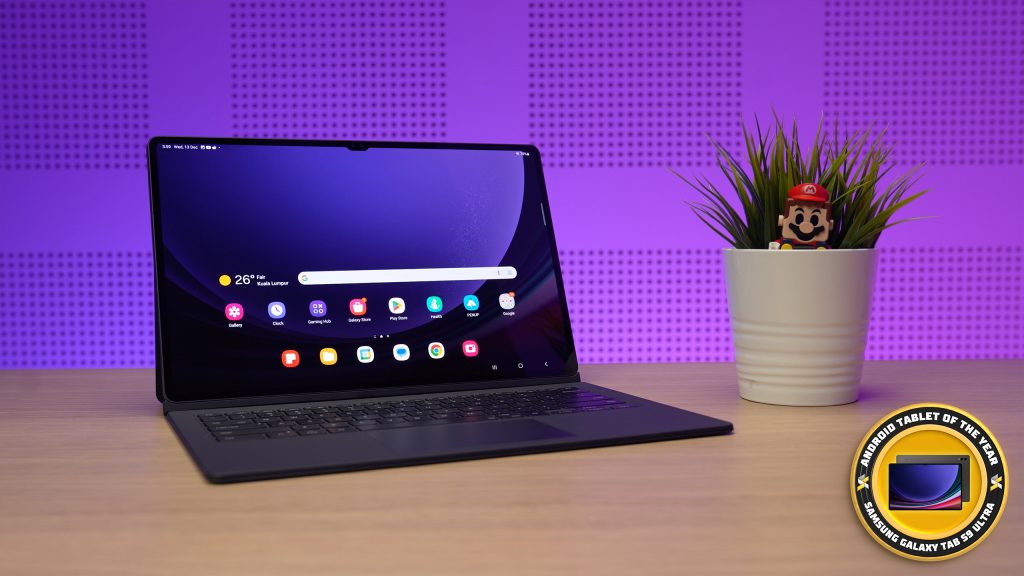
You have to admire Samsung’s ambition to out-Pro the iPad Pro. The Galaxy Tab S9 Ultra is the tablet to end all tablets—a veritable behemoth with a 14.6-inch AMOLED display that makes every Netflix binging session an absolute delight. Incredibly, it’s also now IP68 water and dust resistant, and Samsung’s Dex is a far better windowed desktop emulator than iPadOS’ clunky Stage Manager.
What’s more, you get an (also IP68) S Pen and—in Malaysia, at least—a keyboard case bundled in, making the hefty RM5,999 starting price much easier to swallow. Sure, it has its drawbacks: it’s incredibly bulky and heavy, and the case’s included trackpad is trash. But this is the only Android tablet that can make the iPad Pro look like child’s play, and that has to be celebrated. – JL
Learn more about the Samsung Galaxy Tab S9 Ultra here.
SILVER: Xiaomi Pad 6
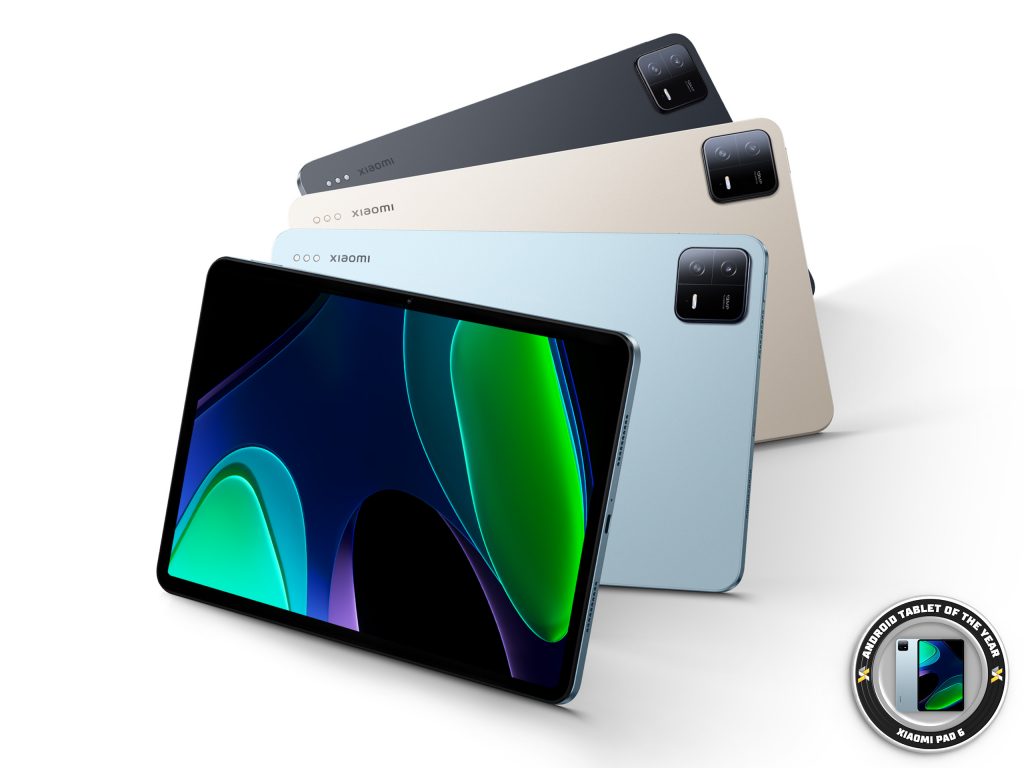
Samsung’s decadent excesses aside, Android tablets are at their strongest at the lower end of the price spectrum, offering sheer value for money that the iPad line simply can’t match.
Nowhere is this more evident than with the Xiaomi Pad 6, which delivers a flagship-class Qualcomm Snapdragon 870 chip, a generous 11-inch 144Hz WQHD+ display, dual cameras and quad speakers for considerably less than what you’d pay for the ancient ninth-generation iPad. It’s a masterclass in how little you have to settle for even when you don’t have that much to spend. – JL
Learn more about the Xiaomi Pad 6 here.
BRONZE: Samsung Galaxy Tab S9 FE
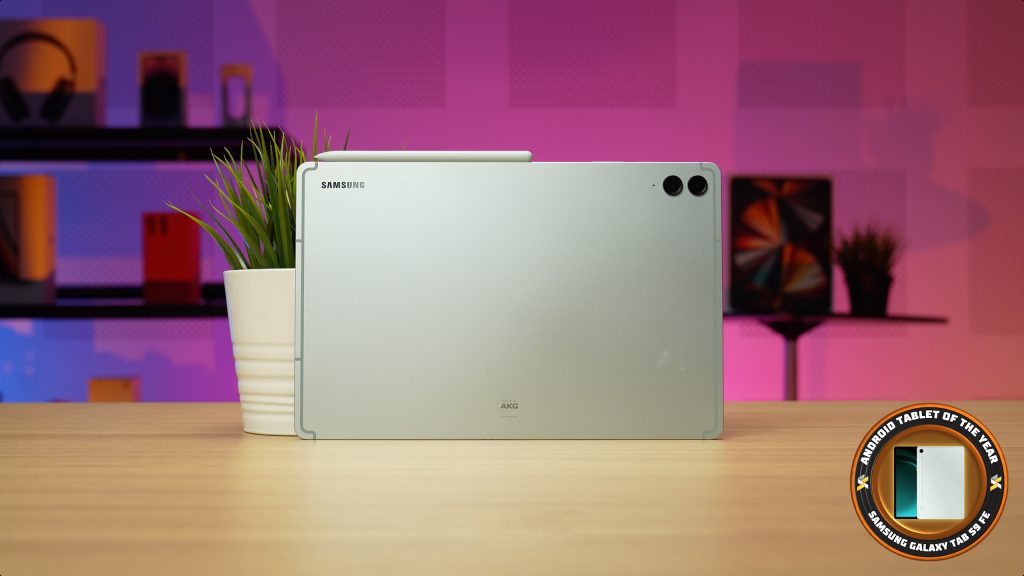
For me, the best thing about the Tab S9 FE is that it comes bundled with the S Pen, which is lightweight yet still comfortable to hold and responds quickly to your inputs. What’s nice is that when you’re using drawing applications, the tablet makes a sound as if you’re drawing or writing on paper. The bigger FE+ has a large 12.4″ OLED screen, but the device doesn’t feel heavy. The 90Hz refresh rate makes for a satisfying viewing experience, and scrolling through social media is a smooth affair. Despite having only two speakers, the sound is clear and loud.
The FE+ also has a 10,090mAh battery that can last up to 18 hours. Those who are new to using an Android tablet may take some time to get used to it, but once you become familiar, One UI offers a lot of customisation options that you can tweak according to your preferences. The most interesting aspect of the FE is that even this cheaper model is water and dust resistant with an IP68 rating. – Amalin Aisyah
Learn more about the Samsung Galaxy Tab S9 FE here.
Value Tablet of the Year
GOLD: Xiaomi Pad 6
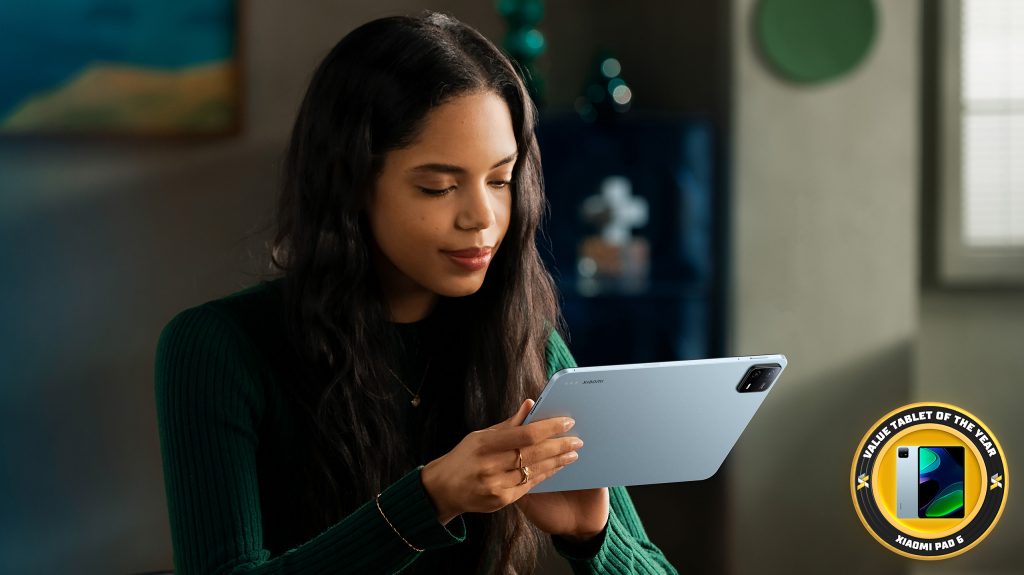
Rightly or wrongly, the iPad sets the benchmark for other tablet makers to follow, the only problem being that the best ones are hideously expensive, priced at a level that really only makes sense to those with deep pockets. With the Xiaomi Pad 6, you get much of the same experience for a fraction of the outlay, and you still get the backing of a reputable brand—one you won’t have to whisper embarrassingly when someone asks you what it is. – JL
Learn more about the Xiaomi Pad 6 here.
SILVER: Honor Pad X9
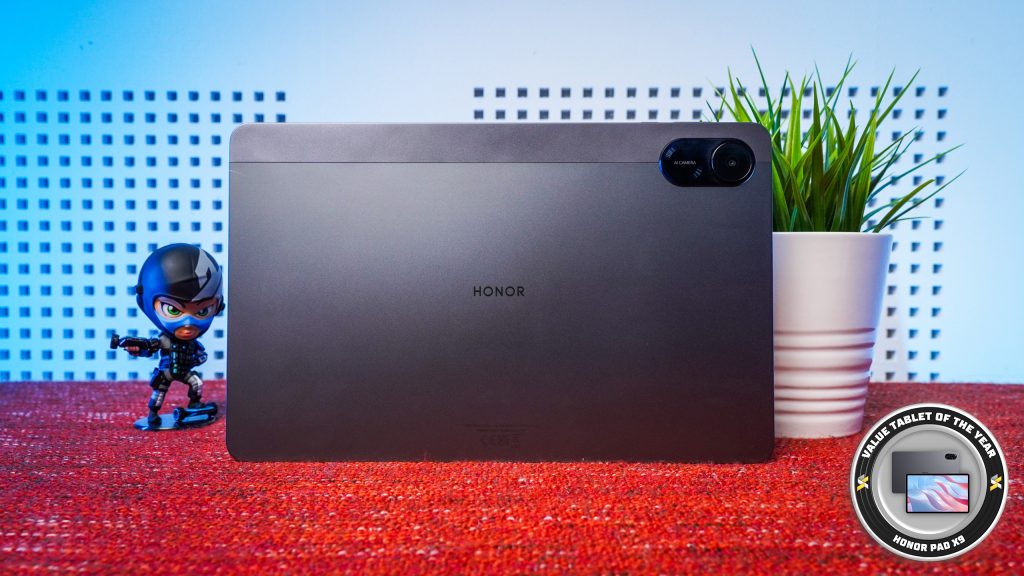
There’s no denying the Honor Pad X9 offers some of the best value for money for a tablet this year. Not only does it cover all the basics, but it’s also the only tablet around the RM1,000 mark that offers 4G connectivity.
Plus its six speakers are loud enough for all your media needs, while the ubiquitous Qualcomm Snapdragon 685 chip delivers ample performance at an affordable price. Yes, it does not come with stylus support, but I can forgive it given the rest of the specs on offer. – Putra Aziz
Learn more about the Honor Pad X9 here.
BRONZE: Redmi Pad SE
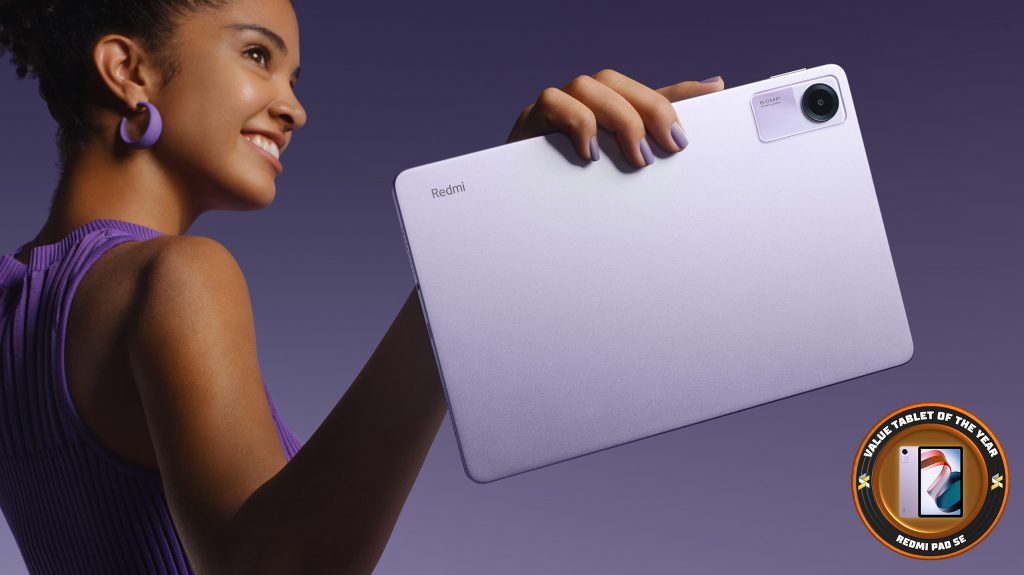
Just as the Xiaomi Pad 6 offers unbeatable value for money for well under RM1,500, the Redmi Pad SE does the same for those who can only spend up to RM800 for a tablet. It comes with the same screen size (with a refresh rate capped at a still-healthy 90Hz), quad speakers and, incredibly, double the base storage at 256GB.
Okay, so that storage is of the mediocre eMMC 5.1 variety, and you can’t expect much in terms of performance from the Qualcomm Snapdragon 680 chip. But hey, it’s still a Snapdragon-powered tablet—what more can you ask for? – JL
Learn more about the Redmi Pad SE here.
Best Tablet of the Year
GOLD: iPad Pro M2

It says a lot about the strength of the iPad ecosystem that it is ultimately what helped the iPad Pro clinch this gong, even considering the device’s fearsome specs. iPadOS is still head and shoulders above Android in terms of its feature set and first- and third-party app support—especially now that you can run full-fledged video editing apps and even AAA games on it, something no Android tablet can do. Couple that with all that the Pro offers and you have the best tablet experience money can buy.
But the iPad Pro is also where ambition runs into the limits imposed by the form factor and operating system. Use it as your daily computer and it will only be a matter of time before you’ll be frustrated attempting to perform a basic task that any decent laptop can do. And if you’re just looking for something you can watch videos on to your heart’s content, the Samsung Galaxy Tab S9 Ultra has it beat. – JL
Learn more about the iPad Pro here.
SILVER: Samsung Galaxy Tab S9 Ultra
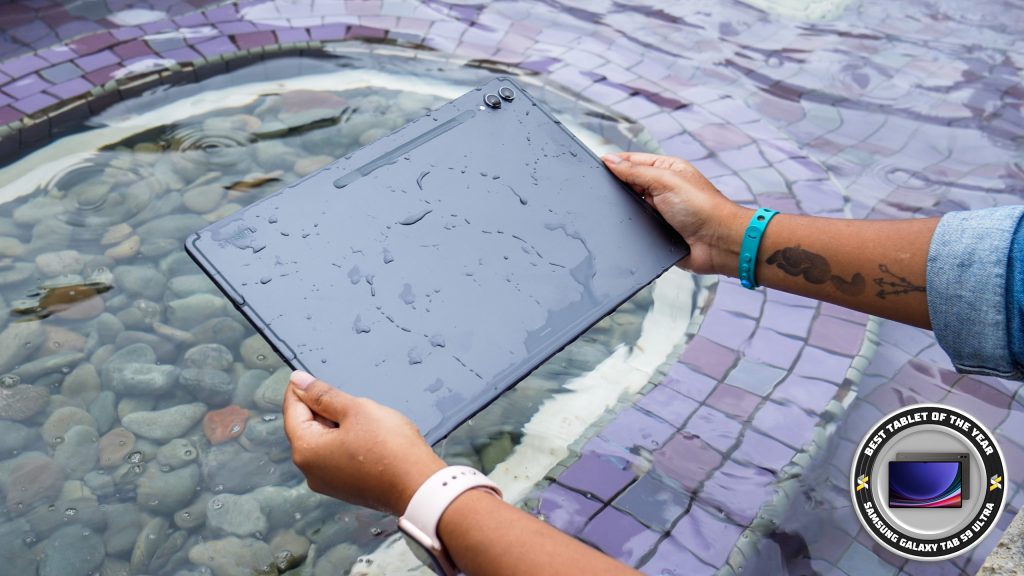
iPad, schm-iPad. The Samsung Galaxy Tab S9 Ultra laughs in the face of the widely-held notion that Apple’s tablets are the default choice. Its sheer size means it literally demands attention wherever you bring it, and its beautiful screen begs for you to use it. Really, its only glaring flaw is that the imprecise trackpad makes it even more infuriating to use as a computer, and if all you’re looking for is a glorified TV, well, six grand will buy you a very nice TV indeed.
Still, it’s hard not to love the Tab S9 Ultra for what it is—a big fat middle finger to Cupertino. It speaks volumes that the iPad Air, hitherto my go-to tablet, now mostly sits unloved in my bag. – JL
Learn more about the Samsung Galaxy Tab S9 Ultra here.
BRONZE: Xiaomi Pad 6
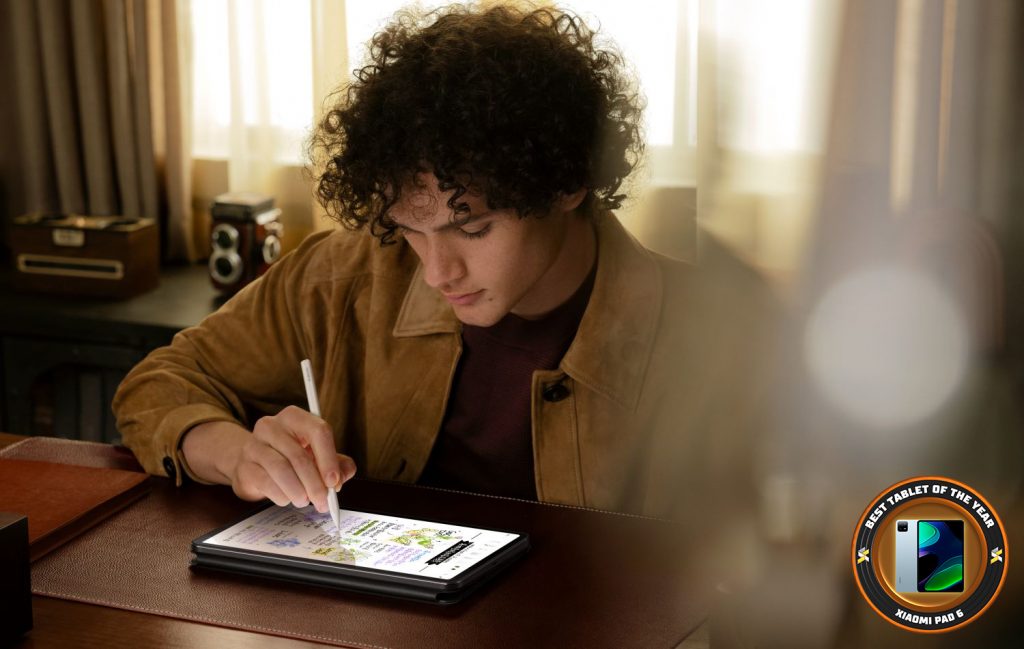
Not much else can be said about the Xiaomi Pad 6 that hasn’t already been sprawled elsewhere here. Even taking price out of the equation, this is one of the best tablets you can buy, Android or otherwise. The fact you can get one from just RM1,299 is just the cherry on top of an already delectable cake. – JL
Learn more about the Xiaomi Pad 6 here.

